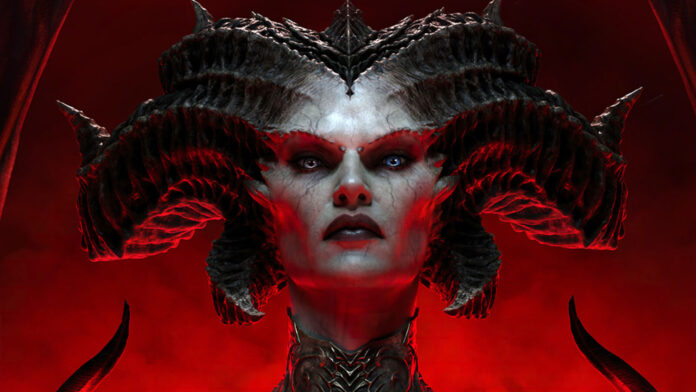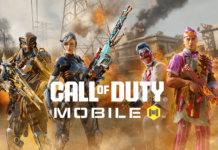Please note, this interview was recorded before the allegations about Diablo 4’s chaotic and mismanaged development aired, so I didn’t have the opportunity to ask about it.
Earlier this week, I had the chance to play the beginning of Diablo 4, and I put around 10 hours into it. I came away very impressed. To be clear, there’s a lot I didn’t see – the whole shared world vision for the game wasn’t particularly apparent because there weren’t a lot of people playing it. But what I did see, I liked. There’s more depth to this Diablo, and more space and freedom in it, than I think I’ve ever seen in a Diablo game. And the world it presents feels tangible and solid, like a real thing, with characters you will come to know and perhaps even care about. In short, it feels like a generational leap forwards for Diablo, as it should.
As part of the media opportunity, I had a chance to interview game director Joe Shely and lead class designer Adam Jackson, too, and what follows is the conversation we had about the game. There are some points of interest around the game’s in-game shop and what will be sold there; the game’s network performance and potential queues, what with it being an online game; and about how the game opens up to other players once you begin to complete areas in it. But there’s plenty of other chatter besides.
Diablo 4 is due for release 6th June 2023.
Eurogamer: Thank you for inviting me into the game, I’ve been enjoying my time with it. One of the things that really struck me about the opening of the game, particularly after coming from Diablo Immortal, was the pace it opens out with. Diablo Immortal throws a lot at you quite early on, as if to kind of impress you – like big bosses and stuff like that. But Diablo 4 seems like a much slower build. It takes more time to introduce you to characters, and I think the world is a character as well, this kind of sludgy, muddy, kind of grey, quite dour kind of world. It takes its time to do that.
I wondered if this was a deliberate design thing, because what it suggests to me is that this is the game’s way of saying, ‘This is going to take you a long time. It’s going to take you a long time to get into the world and we are going to give you things slowly, rather than chuck everything at you and give you lots of flashing things. Is this deliberate?
Joe Shely: Yeah, it is. The world of Diablo 4 is the first time that we’ve been able to present sanctuary in a fully connected, contiguous space, and we really want to do right by it and to give it a chance to breathe. In terms of the story, we’ve worked really hard to upgrade our storytelling methods along with our actual narrative design. And quest design and writing have been a big focus for us, too, with Diablo 4 so I think you’re seeing some of that. Certainly, the intro to the game is our opportunity to set the stage for how the world feels; you’ve referenced some of that. And so we want to take a little bit of time at the beginning to really introduce players to Sanctuary in Diablo 4.
Adam Jackson: I was just going to piggyback off that too and say it’s not just narratively; one of our big pillars of Diablo 4 is ‘return to darkness’, and so you’re going to see it’s a big world, it’s kind of dark, it’s kind of scary, there’s a lot going on, and there’s a lot of opportunity for you to immerse yourself into it as you go through the world. We built a huge world with this game, and not just narratively but in our design. You mentioned slowly, methodically building things out, even the way that classes and our systems and everything are introduced to you. We don’t just throw everything at you at once: you’ll notice it’s pretty simple, you make very small choices, and you get more and more and more over time, and the depth gets more and more and more. This whole game is kind of meant to be: you get in, it’s pretty simple, it’s pretty easy to grok, and then you just get more and more stuff over time. And you’ll see that narratively in the world and how you build your character, and how you do everything in the game. It’s meant to last a long time.
Yeah, I’ve definitely noticed that with the skills around the characters. It’s more complex than I can remember in any other Diablo. It’s great. But for someone who gets caught up in min-maxing like me, I’m like a rabbit frozen in headlights for hours.
Breathing space – Joe I think you mentioned space to breathe – is a key thing I kept picking up on. There’s lots of space. This world feels very big, the towns even feel quite big and spread out as you’re running around, not squished in. How much of the world are we seeing in this build – what chunk of the whole?
Joe Shely: Well, the build that you’re playing of course is capped at level twenty-five, and features two – Adventure and Veteran – world tiers [difficulty levels]. The full game goes up to level one hundred [fifty normal, fifty Paragon], includes things like Paragon [levels], has additional world tiers as you increase in level, and various endgame systems.
In terms of the world, the area of this build takes place in Fractured Peaks, which is our snowy mountain area. There are four other areas as well in the shipping game: Hawezar, which is more of a swamp type of area; Scosglen, which is [the] green, rainy moors; Kehjistan, which is a windy desert; and the Dry Steppes, which is also a dry area, which has got a lot of oranges and rock formations.
I remember Scosglen – I played Diablo 4 at Blizzcon 2019 and I think it was that Scosglen area that was there then. I haven’t come across a World Boss yet, though, like I did back then – I don’t know if there is one in this build? I presume there probably is.
Joe Shely: Yes. Usually, the World Bosses show up a little bit later but we added one to this build. It shows up somewhat rarely though. so you might not see it. We have been messing with how frequently they show up, so if you keep your eyes peeled, you might see one.
I’ve been enjoying the challenge, though. I started on world tier two and I’ve died a few times, which is good, I like that. I’m also particularly enjoying the revitalised enemies – the funny little Nosferatu vampires that disappear when you’re fighting them, even the werewolves that prowl around you. It really feels – obvious statement of the year – like a new thing. Is everything remade?
Joe Shely: Certainly every single asset in the game is brand new. The engine is new, it uses physically-based rendering; the models are all super-high res. There are no assets at all in the game from previous versions. There are monsters that are inspired by our previous titles, like you might see the Fallen make a return [and] you can find clan goatmen, but they look so great that sometimes they look like completely new monsters – I agree.
I really enjoyed the character customisation. One thing I particularly love is your attention to musculature on characters, particularly in how it varies across the three classes because of the kind of things they do. The Sorcerer looks athletic but not as muscular as the Rogue, and then the Barbarian is a whole other level of beefy again. It’s a lovely touch – I really appreciate that being in there – and they’ve got great back muscles.
Anyway! I noticed the characters didn’t seem to be gendered. There’s just a male-presenting body type and then a female-presenting body type, kind of mixed in together and not labelled. Did I interpret that correctly?
[They nod yes.]
Okay and why is that – was that a deliberate choice?
Joe Shely: Yeah. We felt like the best way to do it was to just give players some different presentations that they could choose from. If you’ve played previous Diablo games, character creation was fairly limited, and one of the reasons that’s the case is that Diablo… Sometimes you’ll play a game and there’s one character, and you can make different classes from that one character – it’s like a basic human body. But in Diablo, we make different human bodies for all the classes. You were just talking about how muscular the Barbarian is, well, making all of that character customisation for that body, and then making all the character customisation for the Sorcerer’s body, it’s a tremendous amount of work, but we thought it was really important with Diablo four. It’s part of the idea of players being able to play their own way, being able to make a character that they want to be or that they want to experience the world with, and having as many options for players to do that as possible.
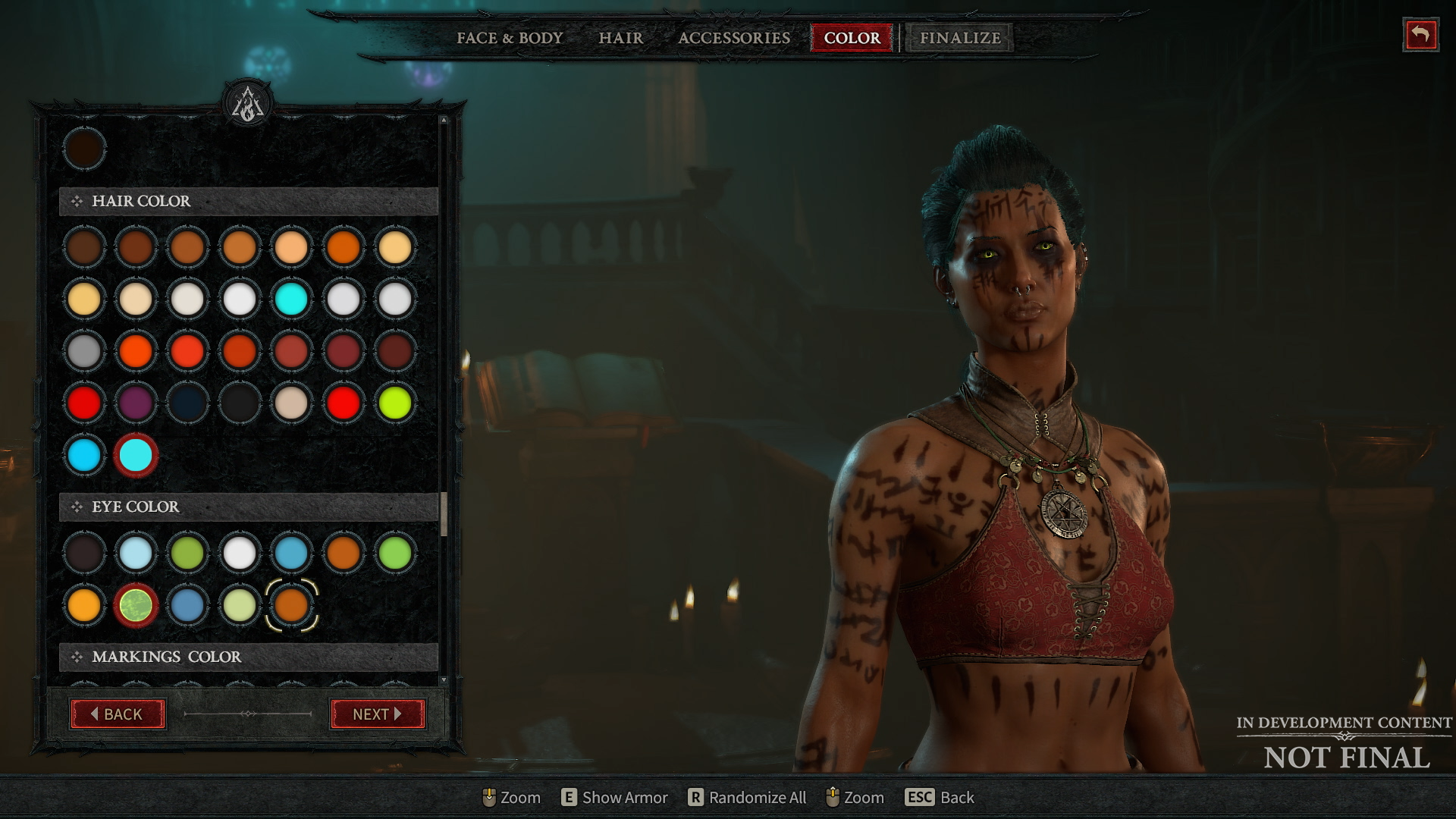
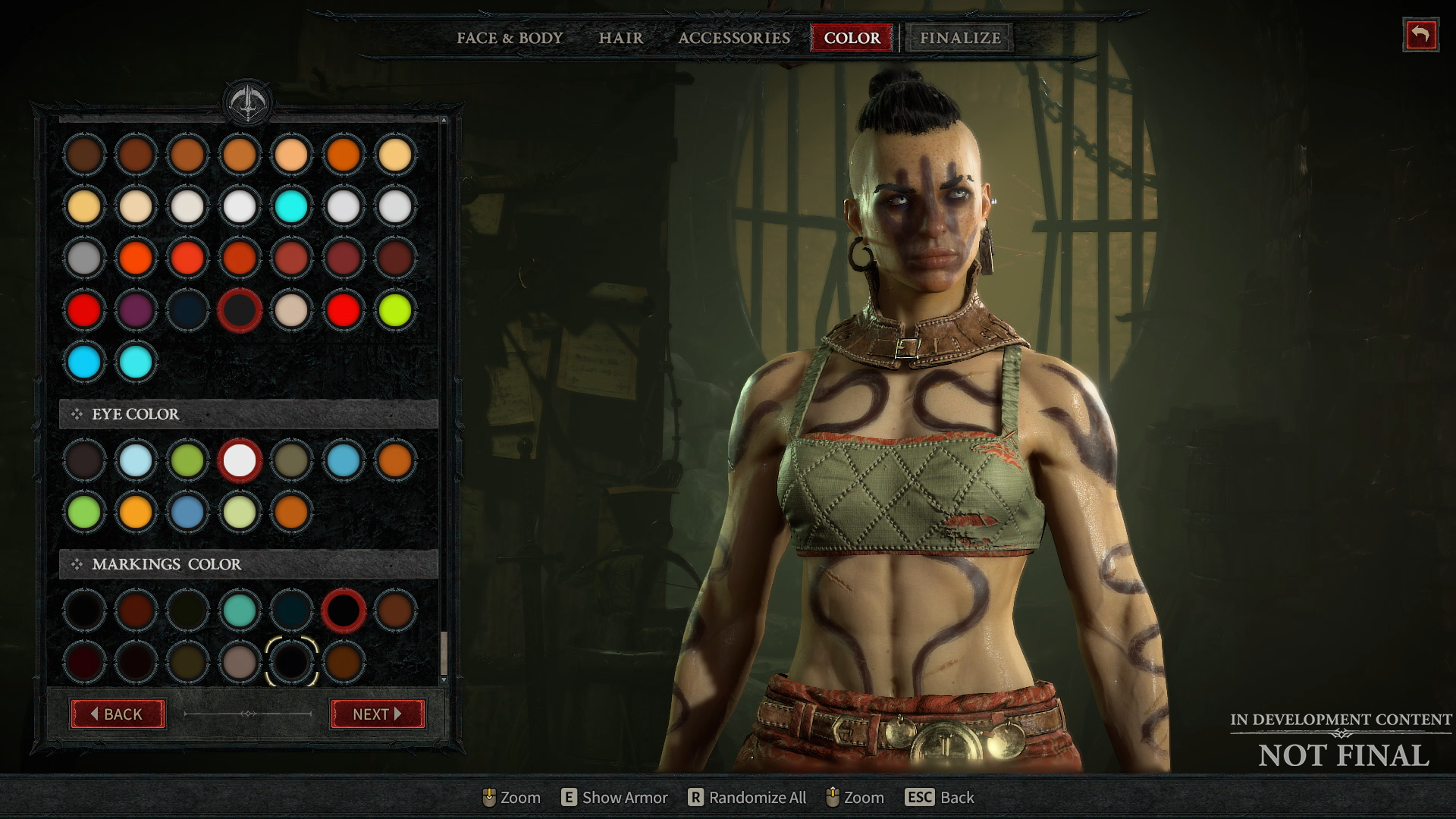
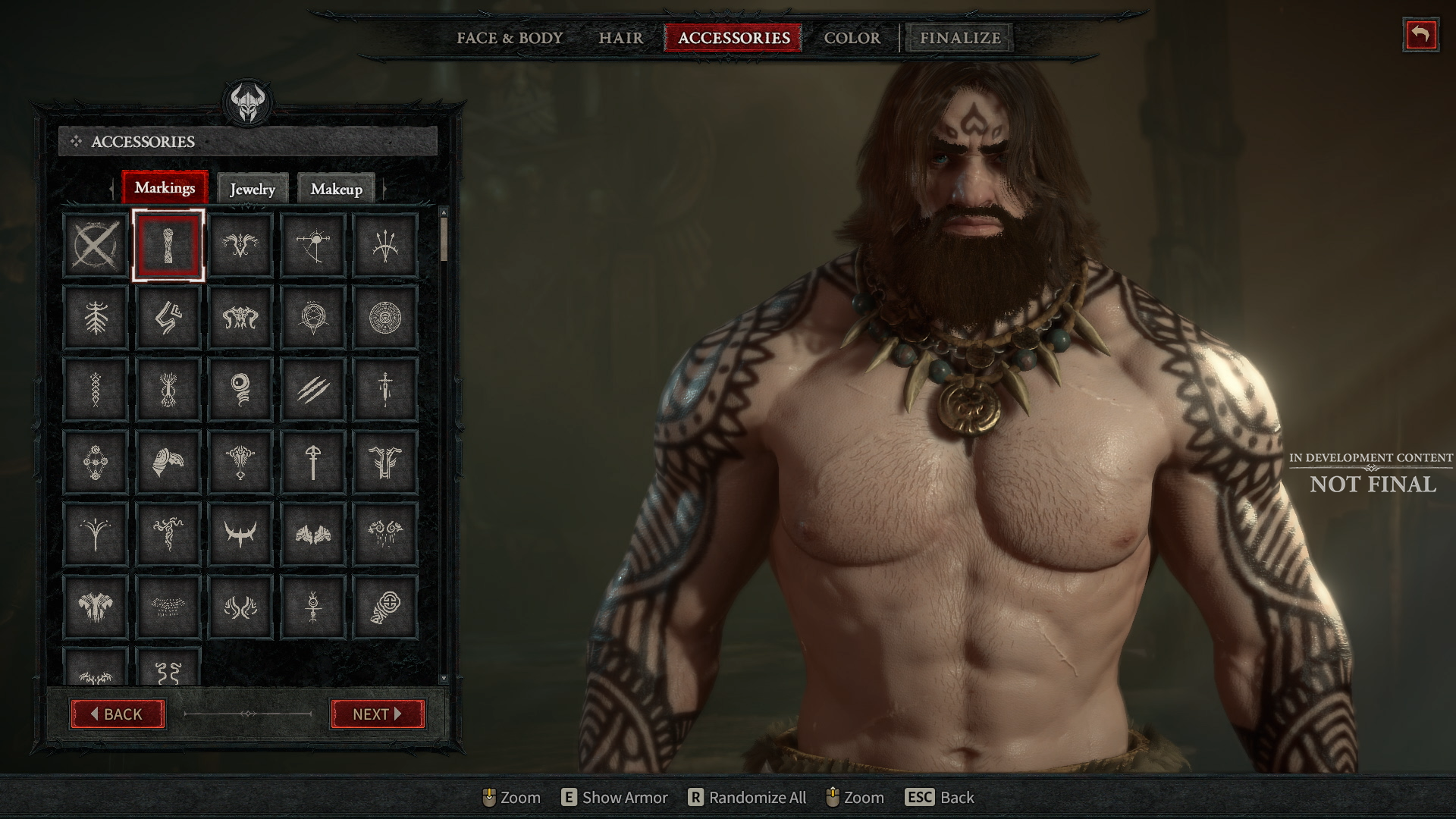
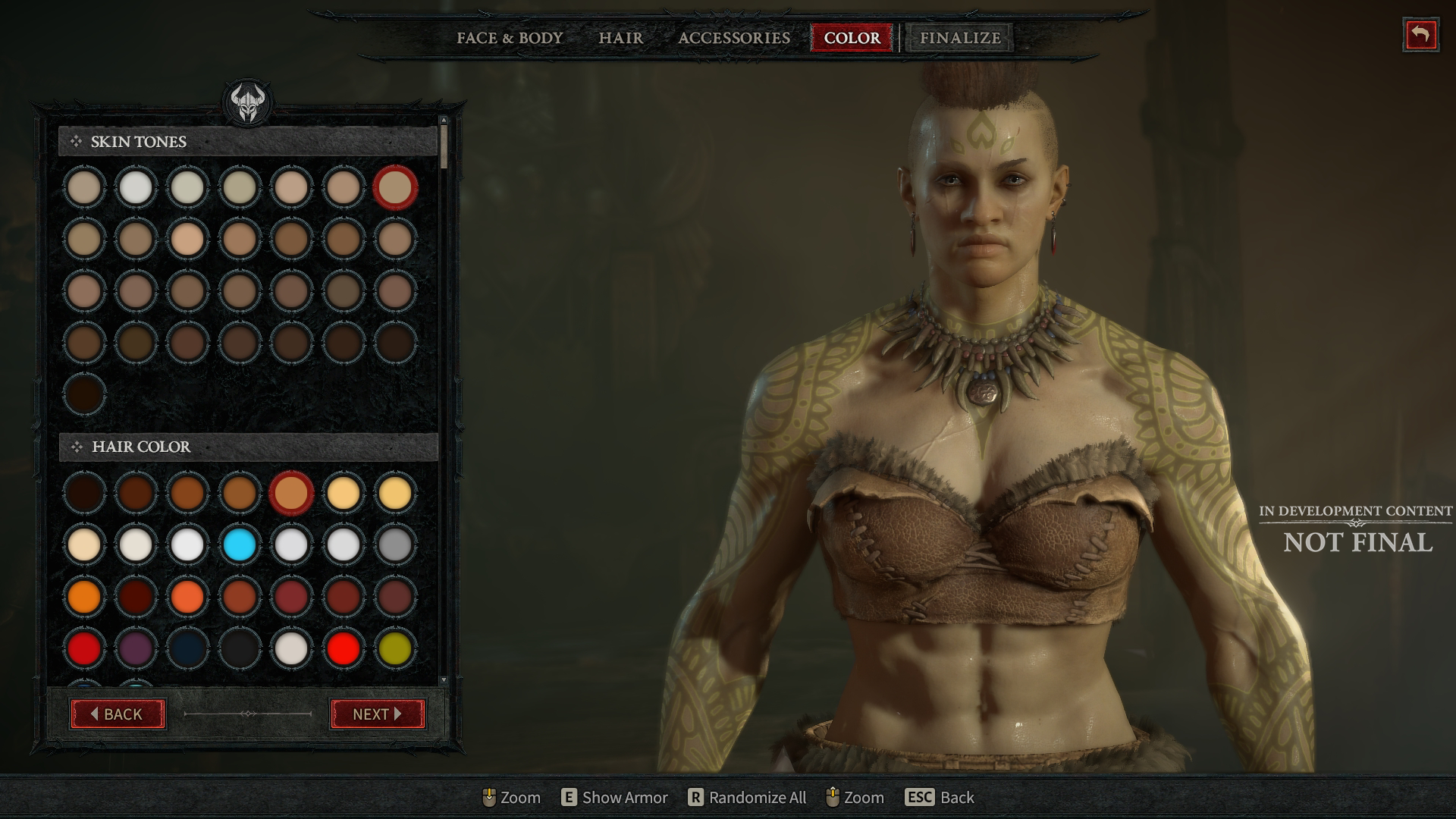
It was nice to see lots of different skin tones, skin colours, as well. Another feature I really like that’s tied to this is that when you see the character select menu in the game, when you’re looking at all the different classes around a campfire, their appearances seem to be randomly generated – or cycled through – each time you do. So one time, you see a white Barbarian and the next time you see a black Barbarian. I like that. It’s a nice way to avoid there being one canon presentation of a character, and to relate to many more people playing the game.
One thing I noticed when logging into the game is there’s an online queue thing there. And obviously there aren’t many people playing this demo so the queue was nearly non-existent. I still noticed it, though, and given what happened with Overwatch 2 and the queue times around launch, it worries me what could happen here. How are you going to mitigate against queues when people flood in?
Joe Shely: So the first thing, of course, is that if we somehow end up with more people than a server can handle at any given time, we actually need a queue system so that the game doesn’t say, ‘No! You can’t play – sorry!’ [he laughs]. So we’re testing that and so that’s why you’re seeing it in the demo.
But we’ve been working very hard on our network infrastructure, on our server infrastructure, learning lessons from other launches, because of course at Blizzard we have other titles […] So we’re learning lessons from other launches that we’ve done recently, and our server architecture is very strong. We’re preparing to host way more players than we think will actually be there, and we’re very committed to having a smooth launch and having people be able to play on day one. We want to be in a situation where a person can be excited about the launch and say, ‘I’m gonna take launch day off and play the game,’ and for them to have a good experience. That’s what we’re working toward.
Something I’m concerned about – maybe because of what happened with Diablo Immortal – is the in-game shop. And I know you’ve talked about this as a cosmetic-only shop, but people tend to promise this exact same thing – I think even Diablo Immortal did, and then this whole gem thing became apparent and people were spending all sorts of money on that. Can you tell me what exactly is going to be sold in the game’s shop?
Joe Shely: Sure – and we did a blog on this recently, back in August, that goes into a lot of detail. But yes, it is a cosmetic-only shop. You’re going to see lots of different things like armour, armour-visuals for your character – cosmetic armour. If you check out, in the build, our wardrobe in the towns – of course there’s lots and lots of armour that you see in the game and you can salvage to get new looks. [But] you can also go in the shop and get new looks that way. And there are a variety of other cosmetic things, like you could get markings for your character, character customization, things like that. We plan to have a variety of those kinds of things. If you check our August blog, it goes into a lot of detail.

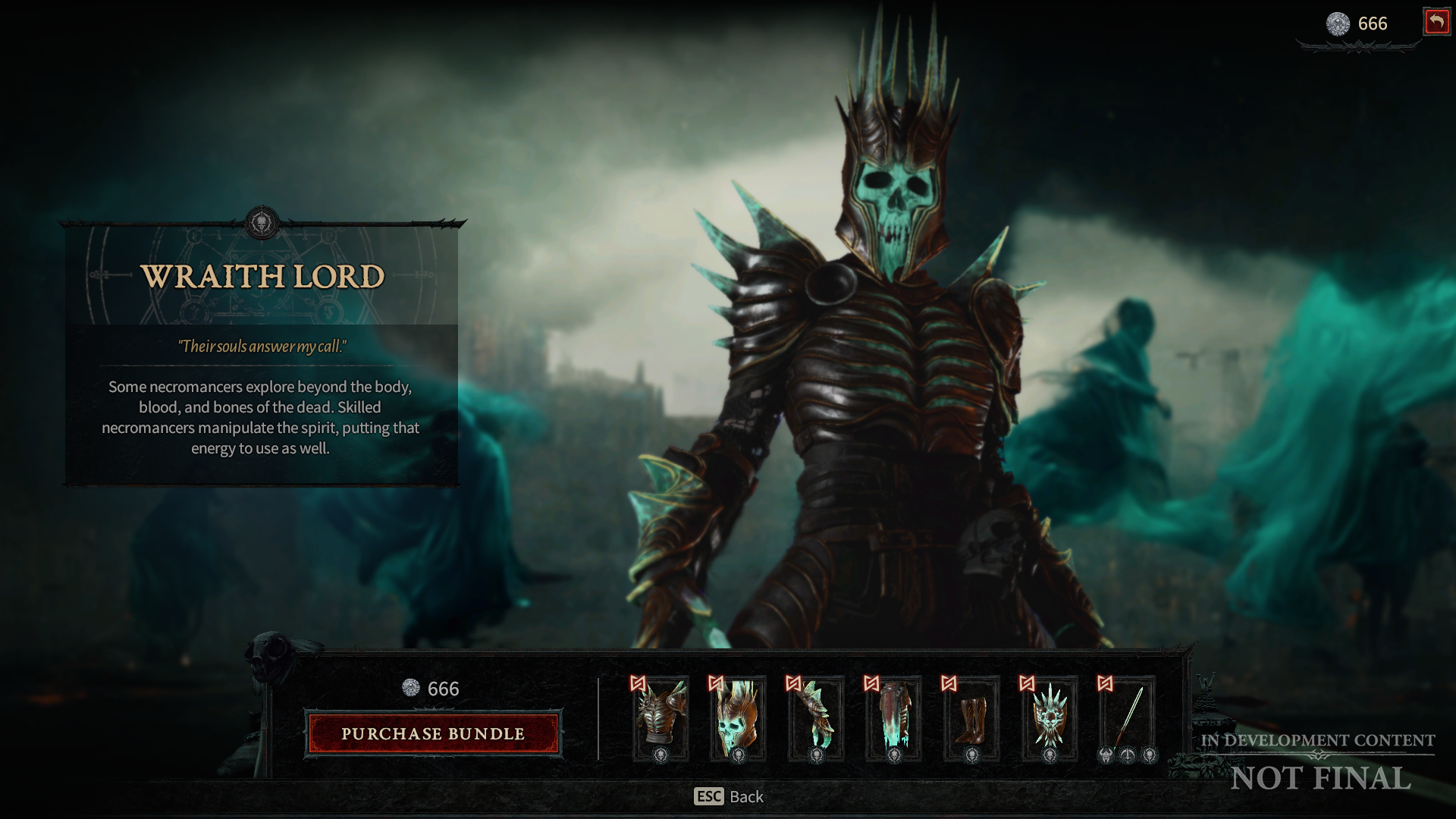
Okay. Also, I just wanted to check this because it isn’t abundantly clear, and maybe I’ve just misunderstood, but is Diablo 4 a full-price, premium game?
Joe Shely: It’s a boxed product, yeah.
And you mentioned seasons in the presentation [before we played the build] and, I think, a season pass. Did I hear that correctly?
Joe Shely: Yes. So the launch of Diablo 4 is just the beginning. The team that’s building Diablo 4 is going to be moving from building Diablo 4 to working on the live service, and working on our expansions for the game. We’re not going to ship the game and everyone’s gonna go off and do something else: we’re going to continue to work on the game. And we’re going to do that by releasing frequent expansions which have new stories, new quests, new classes – those kinds of things; and our live service, which will feature seasons every three months that include major new seasonal features on a much grander scale than we’ve seen in things like Diablo 3, because again, all the people building the game are going to be working on seasons, working on expansions. And yes, it will feature a season pass that will serve as a companion to each season and its seasonal features.
Maxim Samoylenko (senior global PR manager, Diablo): One point of clarification from me is that “season pass” is not actually the finalised name – we might change it.
Ah, okay. But presumably this is a paid thing that works in a similar way to, say, Overwatch 2?
Joe Shely: You can choose to purchase it if you’d like, but if you don’t purchase it, you can earn tiers on the free track as well.
Okay, and just one final word on that: people who don’t want to buy the season pass, are they still going to be able to get this new content and stuff that you’re working on?
Joe Shely: Absolutely. Yes. The Season Pass is a companion to the season itself. So if you think about how Diablo 3 just released a season with ethereal items: In Diablo 4, what we’re doing is far more extensive than that, and all of the seasonal features and seasonal experience that you’ll get is completely free, and everyone who’s playing, who has Diablo 4, will get access to that. The season pass is on top of that and it gives access to additional cosmetics and other cool stuff that you can get. But it’s absolutely not [required] – you don’t have to buy it to participate in seasons.
I heard you talk in the presentation about couch co-op. I love couch co-op and love that you’re doing it. Is this going to work the same as Diablo 3 – is this a two-player thing, is this a four-player thing? How exactly is this going to work?
Adam Jackson: We do support couch co-op. You are able to play with people on the console right next to you – that’s still fully supported.
Super. And is that for two people, or…?
Joe Shely: Two-player couch co-op, yeah.
Okay.
Because I haven’t seen the full game – I’m level 17 or something like that [I ended up at around around level 22] – can I ask whether there are Rifts in the game at all?
Adam Jackson: We don’t have the concept of Rifts. We do have other endgame activities that borrow some similar ideas from Rifts. We have these things called Nightmare Dungeons, which are like tiered dungeons that you can do. And then we have something called Helltide, which is like an open-world place where certain sections of the world become invaded, and you can go there and get bigger rewards. So we’ve learned lessons from that idea. We don’t have the exact same thing but we have a lot of different endgame activities, actually, that people will be able to participate in.
I was just reading up about some of these actually.
Something I had an itty-bitty question about was about Aspects in the game. I wasn’t quite sure how they worked. I see that I’ve unlocked one or two, but are they just passive powers and active all the time, or do I need to apply them to something?
Adam Jackson: So there’s a couple of different things going on there and different ways that it works. So the first thing is called the Codex of Power, and the idea of this is that when you go to dungeons in the open world, it’ll have an Aspect of Power there. And when you go in, you get that Aspect and you actually keep it forever – it’s part of your build and your character that you have. And what you do is then you can turn in materials and you can imprint that Aspect and turn any yellow, rare item into a legendary item with that specific Aspect or legendary power.
And you can use the Codex of Power over and over again, this is something that you have the ability to create. There’s over, I think, a hundred different legendary powers in the game that are attached to the Codex, so there’s a big chunk of our legendary powers that are there that you can just imprint as you go. But when you imprint, you get the worst version of that.
Legendary powers roll in a range of how strong it’s going to be. This [an Aspect] gives you the lowest power version. So it’s a way that you can enable your legendary build fantasies, or a lot of them, to come online, but you still want to do the regular item hunt to get the better versions of the item that drop naturally from killing enemies and doing dungeons and everything else. And then there’s still another large subset of legendary powers that aren’t in the Codex, that you can only go and hunt and do the normal game activities to get. So this is just a way that you can get your build and make it the way you want, guaranteed, and then you still need to farm and do everything else like the normal Diablo game to get the ideal version of your build.
I see. Another itty-bitty question: because I can’t see the Paragon levels in the build I’m playing, they’re locked, can you tell me what kind of abilities and powers are there to unlock?
Adam Jackson: Oh there are all kinds of upgrades there. So the way that Paragon works – I believe we did a presentation on this in the past – is you move through these Paragon boards as you level up and choose different directions to go. And they give you both passive stats, procs with active stats and powers – even up to some legendary power-level procs on different boards and things that you can use to further customise your character. So it’s a whole other mini-game, basically, that opens up at the endgame that gives you a lot more flexibility and customisation in your character builds.
Fantastic. And I just wanted to double-check, and I’m assuming this isn’t the case, but are there anything like Bounties or Adventure Mode in the game?
Joe Shely: So yes, there are. There’s a system that we have called Whispers. And basically, there’s a tree with many heads on it, hanging from it, because this is Diablo four after all. And the heads have a variety of tasks that they would like you to do. So you can visit the tree, and if you check your map, you can find lots of areas where there are tasks that you could do that will serve the interests of the tree, and so you can choose among those. And as you complete tasks, you can go in and get cool rewards from the tree for completing them.
Once players finish the campaign and actually even before they finish the campaign, they’ll start to see some of the endgame, which we expect to be around level forty-five – it could be higher or lower depending on how players level up. But as they’re playing through and getting near the end of the campaign, we start introducing these – in Diablo 3 terms, you would call it Adventure Mode – these endgame systems. As you complete areas of the campaign, those areas of the world become public spaces and you start to see events and stuff in there, so it’s really sort of an organic process.
Joe Shely and Adam Jackson, thank you.
www.eurogamer.net

